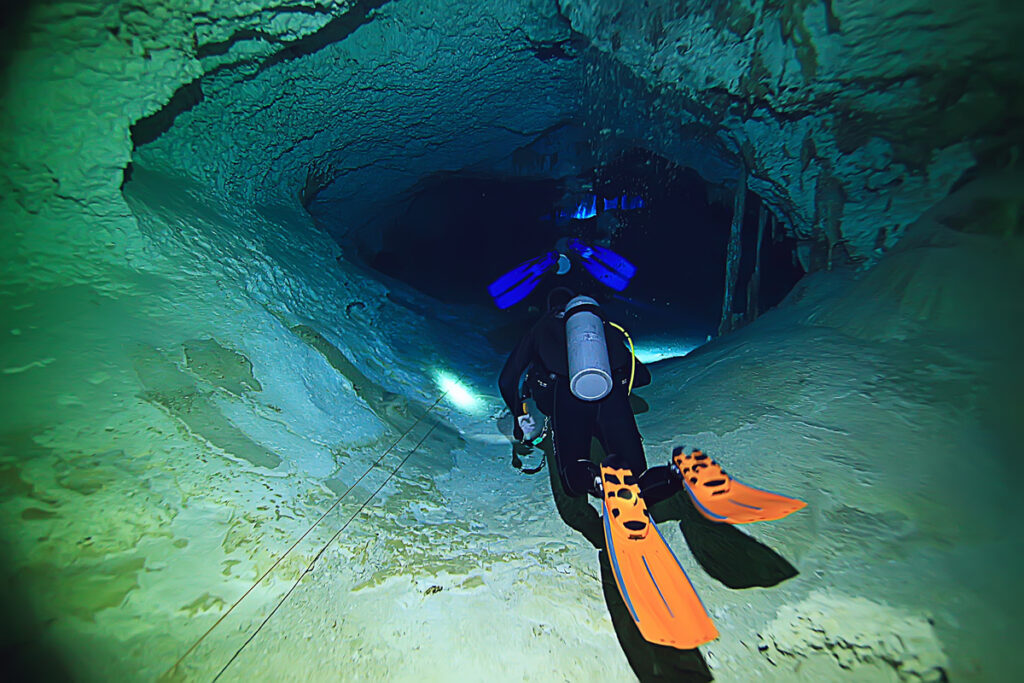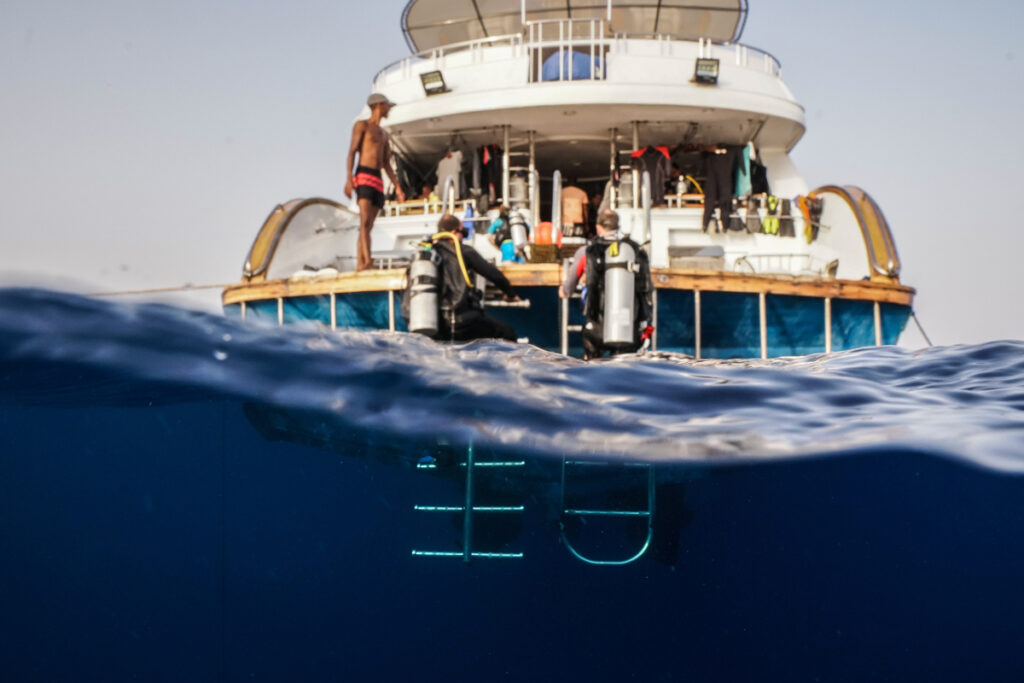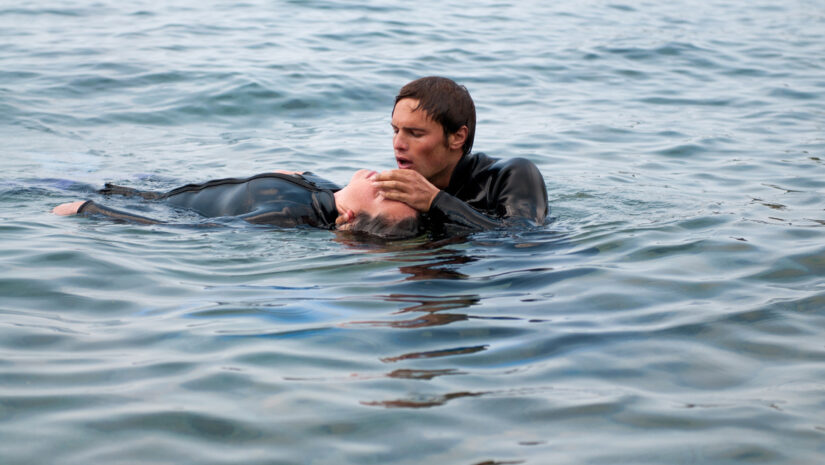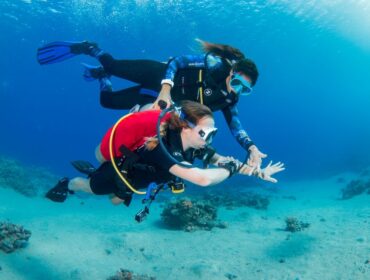Dive insurance protects you from the things you hope never happen, like getting injured underwater, losing expensive gear, or missing a trip because of travel chaos. Whether you’re heading out on a local shore dive or flying halfway across the world for a liveaboard, having the right coverage can make all the difference when plans go sideways.
A lot of divers think their regular travel insurance has them covered, but it usually doesn’t. Dive insurance is built for the risks we face underwater, from decompression sickness to flooded cameras. In this guide, you’ll learn what it actually covers, how it works, and how to pick the right plan before your next dive trip.
What is Dive Insurance and Why Do You Need It?
Dive insurance covers the specific risks that come with scuba diving, things like decompression sickness, emergency evacuations, and damaged gear. Unlike standard travel insurance, it’s designed around what can go wrong underwater, not just what can go wrong at the airport.
If you get injured on a dive, treatment can be expensive. Hyperbaric chamber sessions alone can cost thousands, and most hospitals or chambers won’t start treatment without proof of insurance. Even a minor ear injury or a missed no-fly window can lead to costly delays or cancellations. Without coverage, you’re left paying out of pocket.
Dive insurance isn’t only for professionals or technical divers. Even on a local dive, you’re taking on risks that typical health or travel insurance might not cover. Recreational divers often assume they’re covered under general policies, only to find out later that scuba is specifically excluded or limited. That’s why dive-specific insurance is essential, whether you’re diving close to home or halfway across the world.
What Does Dive Insurance Typically Cover?

Dive insurance covers the things most likely to go wrong when you’re in or around the water, such as medical emergencies, dive equipment issues, trip disruptions, and liability claims. These are often the areas where standard travel or health insurance falls short.
Medical & Emergency Evacuation
Dive insurance pays for treatment related to dive injuries like decompression sickness, arterial gas embolism, or lung overexpansion injuries. It also covers emergency transport, including boat evacuations, helicopter airlifts, and ambulance transfers to hyperbaric facilities. Some policies even include search and rescue costs if you’re reported missing during a dive.
Dive Gear and Equipment Protection
Dive insurance reimburses you if your gear is stolen, lost, or damaged during a trip. Coverage often includes things like BCDs, dive computers, cameras, and wetsuits. Some plans offer replacement value; others cover only depreciation. This is especially useful on liveaboards, remote dives, or if you’re checking bags with airlines.
Trip Cancellation and Travel Delays
Dive insurance helps if you have to cancel or cut short a dive trip due to illness, injury, airline delays, or other covered reasons. It can reimburse non-refundable costs like liveaboard bookings, course fees, or dive packages. Some policies also cover missed connections that cause you to lose part of your itinerary.
Liability Protection
Dive insurance provides third-party liability coverage if you accidentally injure someone else or damage property during a dive. This is particularly important for dive professionals, instructors, or anyone guiding others, but some recreational plans include limited liability protection as well.
Dive Insurance Vs. Travel Insurance: What’s the Difference?

Dive insurance provides coverage for risks specific to scuba diving, while travel insurance focuses on general trip-related issues like flight delays, lost luggage, or non-diving medical problems. The two are often confused, but they don’t offer the same protection.
Travel insurance rarely covers injuries from scuba diving, especially if you’re diving below a certain depth or without a certified guide. Even when it does, the coverage is usually limited and may exclude hyperbaric chamber treatment or emergency evacuation from remote dive sites. That means a serious diving injury could leave you with thousands in uncovered costs.
Dive insurance fills in those gaps. It’s designed with the realities of diving in mind, from exploring a local wreck or descending 30 meters off the coast of Indonesia. Many divers choose to carry both: travel insurance for the general risks of international trips, and dive insurance for everything that happens below the surface.
Top Dive Insurance Providers Compared
Dive insurance providers offer different levels of coverage, pricing, and benefits depending on where and how you dive. While they all cover the essentials, the details vary, which is why it’s important to do your research before travelling. Here are some of the most trusted options in the diving community.
- DAN (Divers Alert Network) – DAN offers comprehensive dive accident coverage with optional travel and equipment add-ons. They’re known for their strong global network, fast emergency support, and clear medical protocols. Plans are affordable and well-suited to both recreational and professional divers.
- DiveAssure – DiveAssure provides dive-only and combo travel + dive insurance plans with no depth limits or tank restrictions. Their direct billing with chambers in many countries is a big advantage. They’re especially popular among liveaboard travelers and technical divers, offering tailored packages for both.
- World Nomads – World Nomads includes scuba diving under its adventure sports coverage, but depth and certification restrictions do apply. It’s a good choice for younger or budget-conscious travelers who want basic diving coverage along with traditional travel insurance.
- Allianz (with diving add-ons) – Allianz offers general travel insurance that can be customized to include scuba diving, but it’s essential to check the fine print. Coverage may exclude depths beyond 30 meters or certain dive types unless you upgrade or declare your activities in advance.
How to Choose the Best Dive Insurance Plan for You

The best dive insurance plan matches the kind of diving you do, where you go, and what gear you bring. There’s no one-size-fits-all option, but there is a right choice for your situation when you know what to look for.
Start by thinking about your trip length and dive style. If you’re planning a single dive vacation, a short-term policy might be enough. But if you dive often or take multiple trips a year, an annual multi-trip plan is usually more cost-effective. Some providers also offer rolling monthly subscriptions if you need flexibility.
Next, factor in your dive profile. Recreational divers may be fine with basic coverage, but if you dive deeper than 30 meters, use mixed gas, or explore caves and wrecks, you’ll need a policy that supports technical diving. Always check for depth limits, excluded dive types, and whether your certifications meet the policy’s requirements.
Your gear value matters too. If you’re traveling with a full setup that includes a dive computer, camera rig, and BCD, you’ll want gear protection with high coverage limits and clear replacement terms. Some policies offer only depreciated value, while others reimburse for new-for-old.
Finally, check the small print around evacuation and search and rescue coverage. Diving in remote areas? Make sure your policy includes airlift services and covers coordination with local emergency teams. The best plans also provide 24/7 emergency assistance with multilingual support, which is crucial when time matters.
Common Exclusions to Watch For
Dive insurance excludes specific scenarios that fall outside safe or regulated diving practices. Understanding these gaps helps you avoid denied claims when it matters most.
Most policies exclude dives beyond certain depth limits unless you’re certified for them. For example, diving below 40 meters without technical certification could void your coverage. The same applies to cave or wreck dives without proper training or equipment. Always match your diving activity to your certification level and the policy’s terms.
Unsafe dive practices are also excluded. This includes diving without a buddy, skipping safety stops, or ignoring no-decompression limits. Some insurers require proof that you followed dive tables or computer guidelines, especially in medical claims involving decompression sickness.
Pre-existing medical conditions may be partially covered or fully excluded, depending on the policy. If you’ve had recent ear problems, asthma, or heart issues, check whether the provider requires a medical clearance or added documentation before your trip.
Non-diving issues like theft outside dive-related travel, or injuries that happen on land, may fall under your regular travel insurance, not your dive insurance. That’s why it’s often smart to carry both.
Real World Claims: What Divers Wish They Knew
Ask experienced divers and you’ll hear stories that bring dive coverage into sharp focus. Many scenarios that seem unlikely are actually all too common, and learning from others is one of the best ways to stay protected.
Dive insurance isn’t just theoretical. DAN recently shared a case where a diver in Honduras suffered decompression illness and required hyperbaric treatment totaling US$31,763. Their primary insurer paid only a small portion, and DAN covered the rest. That’s a real-world example of the kind of financial burden dive insurance can save you from.
In online diver forums, people regularly share their experiences with claims, so be sure to take a browse across the online world. One diver said:
“I paid the hospital, and DAN reimbursed me in about a month.”
That kind of feedback shows why it’s critical to talk to divers at your experience level, whether local, recreational, tech, or liveaboard. Ask what plans they’ve chosen, what claims they’ve made, and what they’d do differently next time. Real input from real peers can help you avoid common mistakes, like under-documenting gear or forgetting to declare pre-existing conditions.
Peace of Mind
Dive insurance isn’t just a box to tick – it’s an important safety net that lets you enjoy your trip without second-guessing every “what if.” Whether you’re heading out on a tropical liveaboard or a weekend quarry dive, knowing you’re covered if something goes wrong makes a big difference.
Of course, you hope you’ll never need it, but if you do, you’ll be glad it’s there. Talk to other divers, think about how and where you dive, and pick a plan that actually fits your needs. It’s a small investment for a lot of peace of mind.






